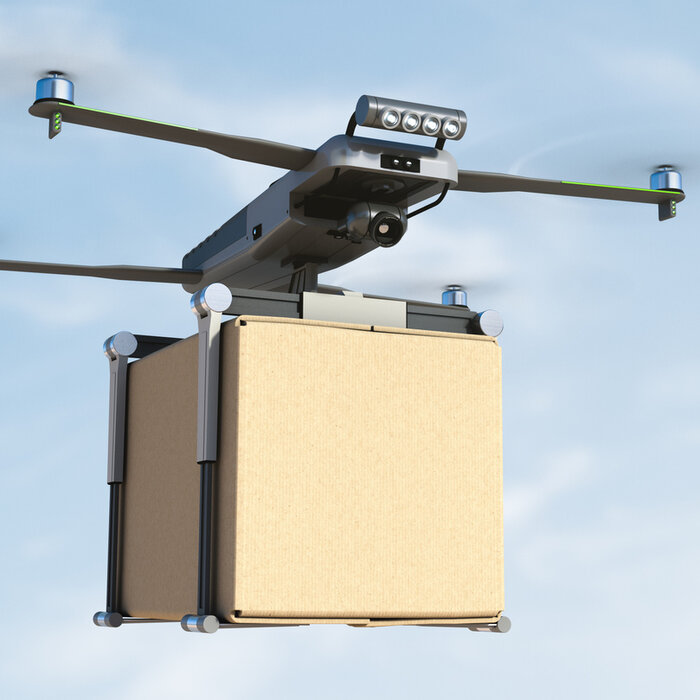“Drugs and prison go hand in hand,” one of the guys in prison told me recently. It’s easy for us on the outside to accept this statement as proof of the dysfunctional, lawless nature of the individuals confined inside. But the truth is much more complicated than that—and all parties (including the prison system and its staff) are to blame.
First, a few facts:
- An estimated one in every 5 of the country’s 2.3 million prisoners are locked up for drug offenses.
- About 65% of the prison population has an active substance use disorder.
- The death rate from alcohol and drug overdoses in prison increased fivefold from 2009 to 2019, outpacing the national drug overdose rate (which tripled in the same period).
“Drugs are very pervasive in prison,” says Henry Golden, recently released from federal prison. “Every institution is different, but while I was at FCI Fort Dix, which is in New Jersey, there was a running joke, but with a lot of sincerity in it: There’s more drugs in Fort Dix than there are on the streets.”
How and why addiction is so common
Individuals still incarcerated are reluctant to explain the realities of the “drug economy” for obvious reasons. And even those who are now free are hesitant, for fear of judgement and use of the information against their friends still inside. But it’s important to understand so that we can better evaluate just how serious a drug-related disciplinary incident is when an individual is eligible for release. (It’s their responsibility, yes, but it’s also important to consider just how shockingly common it is, the culpability of the prison staff, and the lack of help for those who want to kick it.) So, Henry and two others (still incarcerated) agreed to share their observations and views.
“When they are first incarcerated, many people are already users. That’s life on the street. They party on the weekend, drink a little bit, smoke a little bit or every day. Then they get locked up and crave the feeling of being high every now and then. So, they turn to what’s most available and prevalent, and that’s K2.”
K2 is a synthetic drug that mimics the effects of the active ingredient in marijuana, THC. But unlike its natural cousin, K2 is indetectable in urine. That makes the user safe from random drug tests. But it’s also highly addictive.
“I’ve never seen anything like in my lifetime. I’ve seen guys spend all their money, money that they have and money they don’t have, on K2. Some people who smoke it just mellow out. But others become like the zombies in The Walking Dead: slumped over, incoherent.” [Another blog post could be written about the dangers of borrowing money in prison, then failing to pay it back.]
The drug is typically transported by spraying it on paper. And if it’s not sprayed evenly, some parts of it will cause a “spike” when lit and smoked. So, a user might inhale a very strong dose by mistake, which in some cases can cause death. That’s why all mail—except for legal mail—is copied before being given to prisoners, depriving everyone (users and nonusers alike) of birthday cards, the crispness of an original photo of a child, and the sentimentality of a mother’s handwriting. [In a quest to stop all contraband, some institutions are reacting to reports of drones dropping packages into prison yards and are refusing prisoners outside rec time. It would be easy, however, to simply check the property before opening the doors.]

Complicit prison staff
Sometimes, however, it’s not the prisoners (and their friends/family members) who are the smugglers. Instead, it’s the guards. Jesse Skinner, a Native American incarcerated at the Hazelton medium-security federal prison in West Virginia, notes: “This prison has cut out our family visits and they don’t let us get books. So how is it that it’s still full of drugs? It doesn’t take a rocket scientist to figure that out. Corruption is rampant here and everywhere right now. And when a cop [correctional officer] becomes corrupt, he can make literally hundreds of thousands of dollars in just a matter of months.”
Henry estimates that in the three prisons in which he was housed, at least half of the population used drugs in some form. He guesses that maybe a quarter were really “strung out.” Jesse agrees: “Inmates smoke it 24-7. That’s how they cope with the reality in here.”
And then there are those who sell the drugs (it’s not common to both sell and use). Jesse explains: “Basically, you can choose from two paths when you’re in prison. One path is to do what it takes to be able to live semi-comfortably. They don’t give you enough clothes, hygiene products and food to get by in here, so you need money to buy things from the commissary, for example. Selling drugs gives you money to do that. The other path is to accept that prison will be very bad. You’ll have to try to find a job that you don’t want to work and will only pay 25 cents a day, and that means you’ll barely be able to afford to buy anything. The tradeoff is the chance you could be released earlier if you keep a clean track record. Those are decisions people have to make.”
Help for those who want it is hard to come by
Some prisoners escape into drugs, but then are desperate to quit. However, federal prisons don’t offer much in the way of help, and it’s extremely difficult to do so on your own. According to Johns Hopkins Bloomberg School of Public Health, only around 12% of America’s prisons and jails currently offer medication-assisted treatment (MAT), one of the most effective methods of helping individuals struggling with substance abuse. Instead of subjecting prisoners to harsh detox conditions, as many institutions do, MAT combines medications such as methadone and buprenorphine that ease cravings with behavioral therapies. Equally important, MAT includes peer-based counseling from former addicts. A MAT-focused program in California — the largest of its kind in the United States for addicted prisoners — reduced overdose deaths by nearly 60% over two years.
According to Jesse, FCI Hazelton recently started a MAT program, but is very selective about who gets the medication. “It’s supposed to be for anyone who needs and wants it,” he says. “They’re getting funded for that, but instead, they pick and choose who they give it to. They’re saying it’s only for people who are about to get out. But everyone needs and deserves rehabilitation, not just people close to the door. Plus, think about it. Helping everyone kick their addiction would drop the bottom out of the illegal drug trade. Meanwhile, you have to wonder, where’s the money going that they get for MAT?”
Dustin Jolly, who’s detained in the same prison, adds, “I think they have over 500 people signed up [for MAT] and maybe 20 or 30 are getting the medication. I signed up over two months ago and still haven’t been seen the doctor.”
The bottom line, observes Jesse, is that most of these individuals will leave prison as junkies. “And then we wonder why the recidivism rate is so high.”




